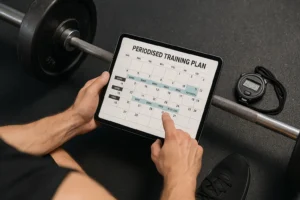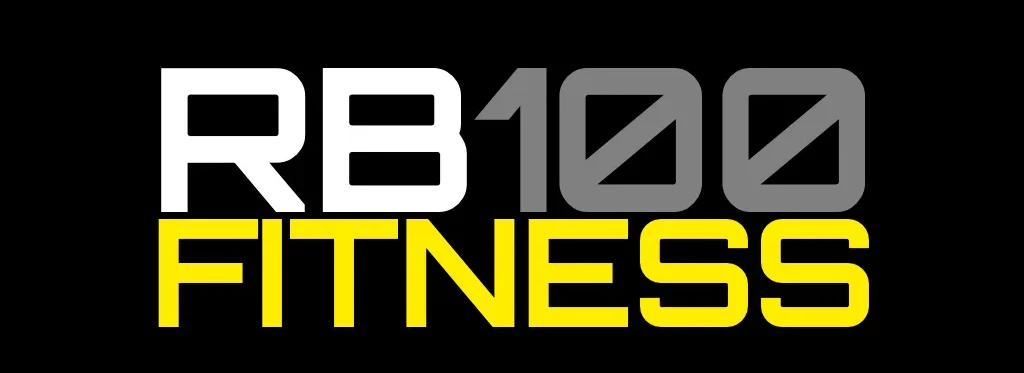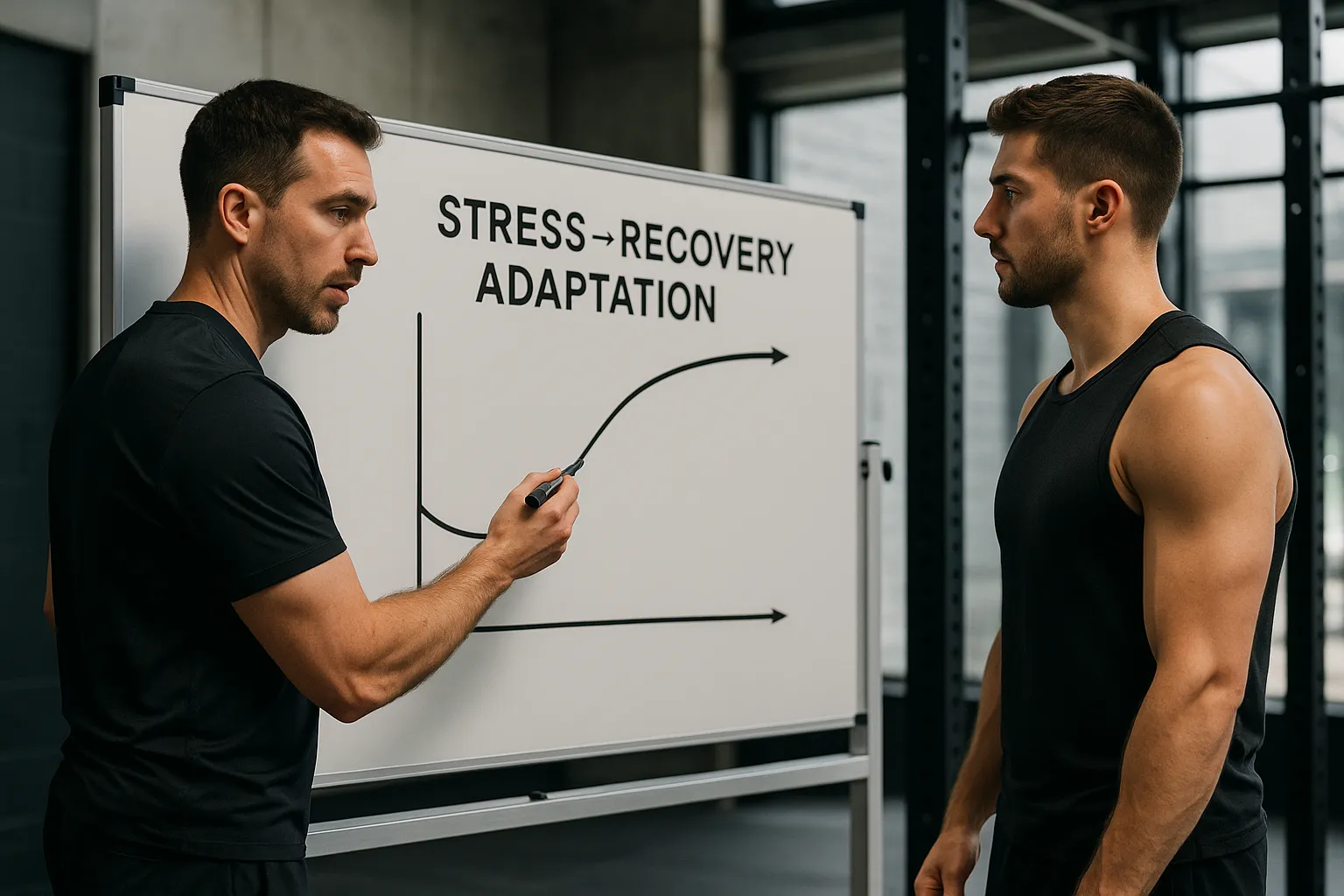If you’ve ever wondered why your progress in the gym seems to stall after a few months, the answer probably lies in periodisation the method behind every successful athlete’s training plan.
At its core, periodisation is the strategic planning of training cycles to maximise performance, manage fatigue, and ensure long-term progress. It’s not just random workouts or chasing PRs every week it’s the roadmap that turns effort into results.
What Is Periodisation?
Periodisation is about breaking your training year into phases, each with a specific goal.
Instead of training at full throttle all the time (which leads to plateaus or burnout), you alternate between phases of build, peak, and recover.
Typical structure:
- Macrocycle — your full training year or season.
- Mesocycle — 4–6 week training blocks (e.g., strength phase, endurance phase).
- Microcycle — your weekly structure, balancing intensity, recovery, and skill work.
The Adaptation Curve: Stress → Recovery → Growth

Training is stress. When you lift weights or run intervals, you’re breaking down tissue and depleting energy reserves. With proper recovery, your body adapts getting stronger, faster, and more resilient.
But if you apply too much stress too often, without rest, that adaptation process breaks.
“You can’t get stronger if you never let yourself recover.” — RB100.Fitness
That’s why periodisation works: it manages the balance between stress and recovery to keep you improving steadily.
Why Periodisation Matters
Without structure, training quickly becomes noise. Periodisation ensures:
- Progressive overload — building strength and fitness gradually.
- Deload weeks — to reset fatigue and prevent overtraining.
- Peaking phases — where you’re at your best for race or competition day.
- Specificity — training the right qualities at the right time.
This is especially important for HYROX or endurance athletes, where performance relies on multiple systems: aerobic endurance, strength, and muscular stamina.
Types of Periodisation

There’s no single “right” model, but here are the most common:
- Linear Periodisation:Gradually increase intensity and reduce volume over time. Ideal for beginners or general strength phases.
- Undulating Periodisation:Varies intensity and volume daily or weekly (e.g., heavy/light/moderate days). Keeps adaptation fresh and avoids monotony.
- Block Periodisation:Focuses on one primary quality per block (e.g., power, endurance). Used in advanced athletic training like HYROX preparation.
Most athletes blend these models depending on their sport, experience, and season.
Applying It to Your Training
Here’s how to bring periodisation into your own program:
- Set a goal — e.g., “HYROX London in May.”
- Work backwards from event day to build cycles.
- Start broad (base endurance, general strength).
- Narrow focus closer to the event (power, speed, race simulation).
- Include recovery weeks every 4–6 weeks.
This structured approach ensures each block builds on the last, culminating in peak performance when it matters most.

The Bottom Line
Periodisation is your plan for sustainable progress.
It’s how you train hard and smart pushing limits while avoiding burnout.
Whether you’re a beginner building a foundation or an experienced competitor aiming to peak for race day, structured cycles are the difference between training and truly performing.
Want to see how this fits into real-world HYROX prep? Check out How to Train for Your First HYROX or explore the Strength & Conditioning section for more structured training insights.





